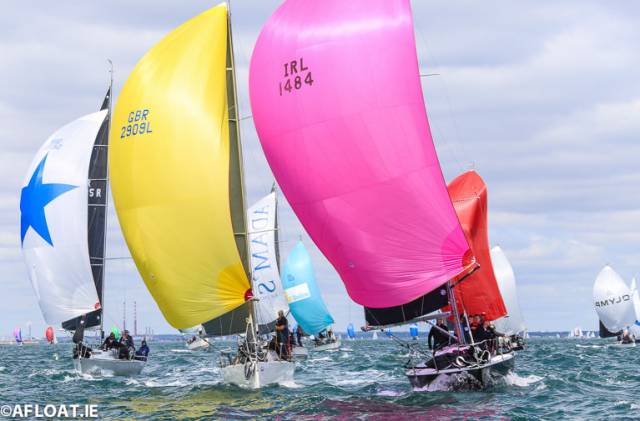Ireland’s largest sailing event, the Volvo Dun Laoghaire Regatta, came to a gentle close this afternoon after an exciting four days of racing in Dublin Bay with 500 boats and almost 2,500 sailors competing.
A light northerly breeze of six knots allowed organisers to complete nearly all 290 scheduled races with many class titles hanging on the outcome of today's final race.
Along with the country's biggest sailing event comes the biggest prizegiving and this was held at 4 pm in the evening sunshine at the Royal Irish Yacht Club.
David Gorman's Flying Fifteen 'Betty' from the National Yacht Club was named top boat after leading an extremely competitive 24–boat one-design fleet with seven race wins in a ten race series.
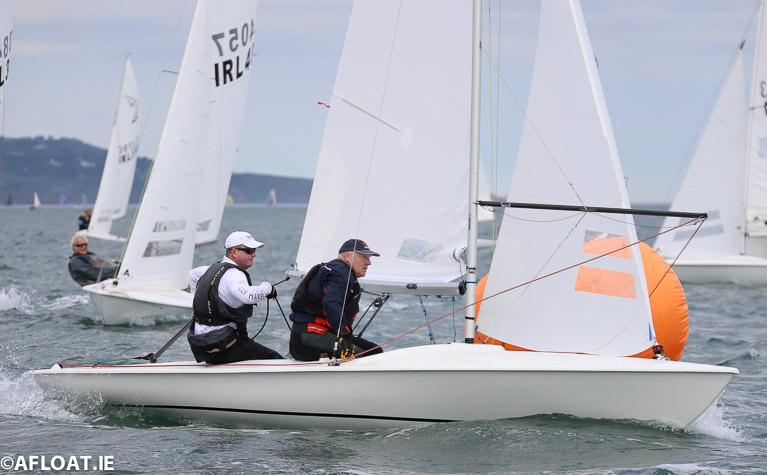 Boat of the Week - The Flying Fifteen Betty of David Gorman and Chris Doorly
Boat of the Week - The Flying Fifteen Betty of David Gorman and Chris Doorly
The Best Dinghy/Small Keelboat Scoter went to David & Edward Warden-Owen Trearddur Bay Sailing Club.
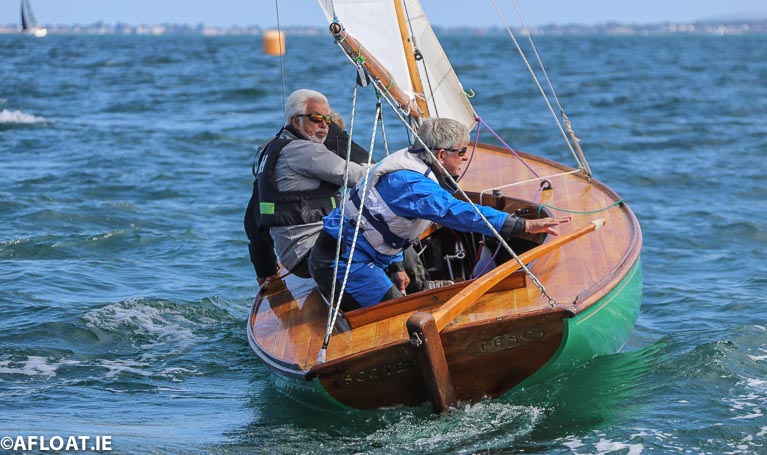 Best Dinghy/Small Keelboat - Scoter David & Edward Warden-Owen of Trearddur Bay Sailing Club
Best Dinghy/Small Keelboat - Scoter David & Edward Warden-Owen of Trearddur Bay Sailing Club
The Best One Design/Keelboat went to the Sigma 33 Leaky Roof 2, Alan Harper E & K Robertson from Cove Sailing Club in Scotland.
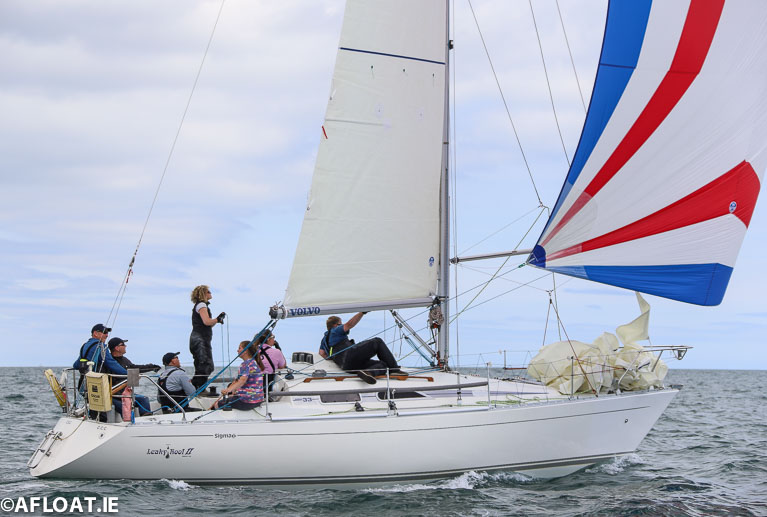 The Best One Design/Keelboat - Sigma 33 Leaky Roof 2, Alan Harper E & K Robertson from Cove Sailing Club
The Best One Design/Keelboat - Sigma 33 Leaky Roof 2, Alan Harper E & K Robertson from Cove Sailing Club
The Best Overall IRC Checkmate XVIII went to Manchester-based Nigel Biggs Howth YC and Royal Irish YC.
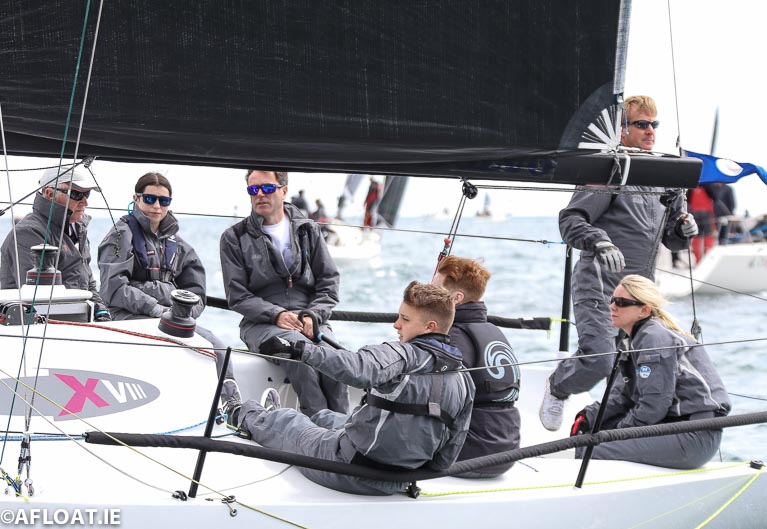 Best Overall IRC - Checkmate XVIII Nigel Biggs of Howth YC / Royal Irish YC
Best Overall IRC - Checkmate XVIII Nigel Biggs of Howth YC / Royal Irish YC
Dublin Yacht Club's shared the bulk of the overall class prizes, awarded this afternoon at the official prize-giving at the Royal Irish Yacht Club, winning 19 of the 34 classes.
A final challenge by John Maybury on the Centre Course today in the single race sailed enabled the Royal Irish J109 Sailor to successfully retain his IRC One crown in a highly competitive 26-boat fleet.
In a summer of achievements for Maybury, his Class One defence follows four consecutive class wins of IRC National Championship victories, the 2019 win coming on Dublin Bay last month. Today's victory was Maybury's fifth VDLR class win in a row winning first in 2011.
The 28-boat IRC offshore prize was won by Seamus Fitzpatrick's First 50, Mermaid also of the Royal Irish.
Seven classes included the regatta as part of their championship calendar in 2019: GP14s, 420s and Mermaid dinghies raced for Leinster honours. The SB20s decided regional titles and the Sigma 33s and Beneteau 21s raced for national trophies.
The biennial event is being hailed an enormous success both afloat and ashore for a combined fleet of 498 boats, the biggest on the Irish Sea. Over 290 races on five different courses were staged in a range of light to medium conditions since racing began last Thursday.
Although 230 visiting boats made up nearly half the fleet, yachts from outside the bay area took away only 11 trophies up from seven two years ago. The bulk of the silverware has stayed in Dublin.
Trophies were awarded in each of the 34 competing classes this afternoon, bringing the curtain down on one of the most successful stagings of Ireland's biggest sailing event that eclipsed 2017's 470-boat fleet.
Scotland's Cove Sailing Club took a win in the Sigma 33 Irish open Championships. Howth Yacht Club had six wins in IRC 2, 2 B, RC35 and, the Howth 17s, and non–spinnaker division 1 but outside of that there was only a single win for Belfast Lough in IRC 3, Rush Sailing Club in the Laser Radial and Greystones Sailing Club won both the Wayfarers and IRC Zero.
UK Olympic Gold Medalist Mike McIntyre won the RS Elite Championships that was run as part of the Regatta and the British Sailing Star was also awarded the Regatta's best visiting boat award, as previously mentioned.
In Dun Laoghaire, the Royal Irish Yacht Club topped the leaderboard winning eight classes from IRC keelboats to Water Wag dinghies. The Royal St. George had six wins. The National Yacht Club had four victories and the DMYC had two.
The Volvo Dun Laoghaire Regatta is a great festival of sailing across the waterfront and Dun Laoghaire town as four sailing clubs come together for the biennial event; Dun Laoghaire Motor Yacht Club, Royal Irish Yacht Club, Royal St. George Yacht Club and National Yacht Club.


























